Following International Women’s Day and National Coding Week, we thought we’d take a look at a subject we’re working on at ETL: how to increase the diversity of our workforce.
Diversity covers a wide range of characteristics, from female inclusion to the protected characteristics of the 2010 Equality Act. These characteristics range from age and disability to religion and sexual orientation. A report by McKinsey found that a diverse workforce leads to improved company performance, with particular gains for organisations with diversity among their leaders. Diverse organisations are also in a better position to protect themselves from tech skills shortages, now and in the future.
However, according to the British Computer Society’s 2021 diversity report, slow progress is being made on diversity. Despite women representing 48% of the UK workforce, just 19% of IT specialists are women. Ethnic minority representation is higher in IT than in the workforce as a whole, but those from a Black/African/Caribbean/Black British background have particularly low representation. There is also under-representation in the IT industry among other protected characteristics, including older workers and people with disabilities.
So how can diversity be improved? Here is a selection of ideas that organisations can implement to extend the diversity of their workforce.
Mentoring and role models
A report by the Institute of Coding found that many young people have a perception that the digital sector is made up of white heterosexual men, with one in ten “actively discouraged from pursuing digital education and jobs due to the lack of people that represent them”. Respondents particularly cited a lack of female role models, with leaders such as Mark Zuckerberg and Jeff Bezos representing a relatively narrow sector of society.
Educational outreach by organisations can target under-represented groups and feature employees with characteristics outside the perceived norm. Liaison with schools is a good starting point.
When employees are recruited, mentorship programmes can pair them with experienced staff members who can provide support and guidance. Reverse mentoring, where senior managers are mentored by a more junior colleague, who is different from them in some way, can help promote inclusion.
Flexible working
Flexible working hours, job sharing and part time opportunities help to foster an environment where all employees can create a healthy work-life balance. This is the core purpose of Flex, our flexible working policy. Flexible working can particularly help employees with disabilities, neurodivergences or caring responsibilities.
Our Flex policy is location-agnostic, so employees can choose to work at home, in the office or a mix of both to suit them. This helps to create a more supportive working environment and also means that we can recruit people who are not usually located in our region, such as people of colour.
Inclusive recruitment
Recruitment can be a subjective process, requiring hiring managers to make important decisions, sometimes to tight deadlines. Including women and other under-represented groups on interview panels helps eliminate unconscious bias during the recruitment process. However, care should be taken to ensure that these representatives are sufficiently senior to have a strong voice on the panel.
Recruitment advertising should use inclusive images and language to encourage applicants from diverse backgrounds. Anonymised applications can help prevent unconscious bias during the shortlisting process. At ETL we use structured interviews and skills-based assessment tasks to reduce the chance of unconscious bias.
Measurement
Organisations can set targets for diversity across the HR pipeline, from recruitment to promotions and rank. In recruitment for instance, organisations can monitor the composition of candidates who apply, who are interviewed and who are hired. Targets can also include targets for departments and seniority levels.
Like all effective targets, organisations can start by determining their current baseline. As an example, at ETL at the time of writing, 20% of our technical staff are female and 16% of our employees are of non-British origin. Then organisations can determine their target – in our case our aim is to reflect the composition of the Welsh workforce – and specify a deadline.
In conclusion
The pandemic showed how technology has become increasingly widespread, so the tech industry needs to make sure that its environment and output works for everyone. The different insights that diversity brings help to create a better user experience, drive innovation and, from the organisation’s perspective, foster a more productive workforce.









